The Sydney to Hobart Yacht Race is a major sporting event in Australia, held on Boxing Day each year.
Attracting some of the best sailing crews in the world, the race travels from Sydney, 630 nautical miles (1,100km) south to Tasmania.
Sydney to Hobart Yacht Race 2025, Dates, Times, Course Route & Tracker
The Boxing Day start on Sydney Harbour promises to deliver all the excitement and drama this iconic race is known for. Spectators can look forward to a thrilling display of competitive sailing as the fleet navigates to the Heads and sets a course for Tasmania, tackling one of the world’s most challenging offshore races.
If you’re still looking to watch the race live from the water, The Jackson offers the best vantage point for an unforgettable race-day experience.
Considered one of the most challenging sailing events in the world, the Sydney to Hobart Yacht Race takes around 1.5 days to complete. Interestingly, there is no prize money for winning the race; instead, participants take part for the prestige associated with winning such a difficult race. Wild Oats is one of the most famous yachts to have won the race, counting seven times out of 10 consecutive years.
The race record is around one day, nine hours, and fifteen minutes. Each boat’s time is adjusted according to its size and expected speed, adopting a handicap system. The power-to-weight ratio is the most crucial factor in speed, and most boats competing in the race are ‘sloops’—single-mast yachts.
The Course
The 628 nautical mile course is often described as the most gruelling long ocean race in the world, a challenge to everyone who participates.
From the spectacular start in Sydney Harbour, the fleet sails out into the Tasman Sea, down the southeast coast of mainland Australia, across Bass Strait (which divides the mainland from the island State of Tasmania), and then down the east coast of Tasmania. At Tasman Island, the fleet turns right into Storm Bay for the final sail up the Derwent River to the historic port city of Hobart.
People who sail the race often say the first and last days are the most exciting. The race starts on Sydney Harbour and attracts hundreds of spectator craft and hundreds of thousands of people lining the shore as helicopters buzz above the fleet, filming for TV worldwide.
The final day at sea is exciting, with crews fighting to beat their rivals but also looking forward to the traditional Hobart welcome and having a drink to relax and celebrate their experience.
Between the first and last days, the fleet sails past some of the most beautiful landscapes and seascapes in the world.
The New South Wales coast is a mixture of sparkling beaches, coastal townships, and small fishing villages. For most of the race south, the yachts can be anywhere between the coastline and 40 miles offshore.
During the race, many boats are within sight of each other, and crews listen closely to the information from the twice-daily radio position schedules (“skeds” as they are called). In more recent years, crews have been able to pinpoint the entire fleet’s whereabouts and follow each boat’s progress against their own using onboard computers and Yacht Tracker on the official race website.
Bass Strait (nicknamed the paddock) has a dangerous personality. It can be dead calm or spectacularly grand. The water is relatively shallow, and the winds can be strong, often creating a steep and difficult sea for yachts.
The third leg after the ‘paddock’ – down the east coast of Tasmania takes the fleet past coastal holiday resorts and fishing ports with towering mountains in the background. Approaching Tasman Island, the coastline comprises massive cliffs, sometimes shrouded in fog.
The winds are often fickle and can vary in strength and direction within a few miles, making sailing very tactical.
After turning right at Tasman Island, sailors often think the race is nearly completed, but at this point, there is still 40 miles of often hard sailing to go. Yachts can be left behind in the maze of currents and wind frustrations.
Even when they round the Iron Pot, a tiny island that was once a whaling station, there is still a further 11 miles up the broad reaches of the Derwent River to the finish line off Hobart’s historic Battery Point, with Mount Wellington towering over the city.
No matter the time of day or night, the first yacht to finish receives an escort of official, spectator and media boats as it sails towards the finish line.
Hundreds of people crowd the foreshores of Sullivans Cove to cheer the yachts and their crews. At the same time, volunteers from the finishing club, the Royal Yacht Club of Tasmania, meet the weary crews with open arms and famous Tasmanian hospitality and escort them to their berth in the Kings Pier marina.
It’s an event that Tasmanians love to host in the middle of Hobart’s Taste of Tasmania Festival.
Then it’s time to celebrate or commiserate, swap yarns about the race with other crews over a few beers in Hobart’s famous waterfront pubs such as the Customs House Hotel or the Rolex Sydney Hobart Dockside Bar.
Start & Finish Villages
The Rolex Sydney Hobart is more than a yacht race; it’s a festival celebrating the sport we love. With race villages in Sydney at the start and in Hobart at the finish line, there’s plenty to celebrate from beginning to end.
Rolex Sydney Hobart Yacht Race – Sydney Village
The Sydney Village is located at the Cruising Yacht Club of Australia in the build-up to and during the Rolex Sydney Hobart Yacht Race.
The village features a big screen, a Helly Hansen merchandise shop, outdoor seating and a bar.
The Rolex Sydney Race Village hosts many events leading up to the race, including the VIP & Skippers Launch, Crew Party, and the Commodore’s Beer & Prawn Night.
Rolex Sydney Hobart Yacht Race – Hobart Village
The Hobart Village is located on the waterside at Constitution Dock.
Competitors and the general public can enjoy live music, activities for kids, Q&As on stage, and delicious food and drink from a wide variety of vendors as they watch the boats cross the finish line.
Following the Race
Whatever the results of the Rolex Sydney Hobart, one thing is certain—when the race starts at 1300 AEDT on Boxing Day, it will capture the imagination of sailors and spectators worldwide. As this year’s activities are being run as a COVID-19 safe event, we request that spectators be mindful of social distancing requirements and join the millions of viewers who tune into the action on TV and online.
Spectators can watch the race from South or North Head in Sydney
When the fleet for this year’s race jostles for position on four start lines around Shark Island, you’ll want to be in prime position yourself. To get the full dose of race atmosphere, you need to grab a spot on North or South Head or join the action on the water among the colourful spectator fleet (including craft of all shapes and sizes, from ferries to kayaks and even the odd water taxi). But if you’re not lucky enough to be there in person when the starting cannon fires, don’t worry – there are plenty of ways to follow the race, no matter where you are.
On Water
If you’ve got access to a boat, you can be on the water with the fleet for the start of the race. Spectator craft positioned in the eastern channel can watch the race begin and follow the fleet down the harbour to the Heads and out to sea. Once underway, the fleet can move fast, so if you want to catch the leaders sailing through the heads, it’s advisable to get well down the harbour and towards the middle head before the start. At the heads, keep the rounding marks well clear.
If you only plan on watching the start and don’t wish to follow the fleet, stick to the western side of the harbour. Good vantage points for spectator boats include Taylors Bay, Chowder Bay, Obelisk Bay, and North Head on the west and Rose Bay, Watsons Bay, Camp Cove, and South Head on the east.
The Harbour will be very crowded, and traffic can be chaotic, so stay alert, follow the advice of race officials, and remember to stay well clear of the exclusion zone between 12pm and 2pm.
The Jackson is the only public and official spectator vessel permitted within the Sydney Harbour exclusion zone for the exciting race start.
On Television
The Seven Network, through 7Mate, will once again broadcast the start of the race live around Australia.
ABC TV will also be following the fleet down the eastern seaboard and providing all the in-race news footage that is used by the various Australian and International news networks.
On The Web
For those who can’t get to watch the live broadcast of the start of the Race on the Seven Network across Australia, Seven West Media will webcast the program. You can also watch a webcast of the live broadcast on the home page of the Rolex Sydney Hobart Yacht Race website.
If you miss the live webcast, don’t worry; a replay of the start programme will be available on this site, and our friends at Seven West Media will be making a replay available shortly after the live webcast concludes and will be available for the duration of the race.
The website includes the complete list of yachts entered, along with a photograph and description of each boat, a crew list, and the boat’s performance data, predicted finishing time and standing for both Line Honours and Handicap Division, which is updated every 10 minutes.
There is also archival data, including results of past races since the first in 1945, the weather they encountered, a summary of line and overall handicap winners of those races, historical reports and statistical information, designers of those line and overall winners, and profiles of some of the race luminaries over the years.
Yacht Tracker
The Yacht Tracker page allows viewers to track the entire fleet or a particular boat from start to finish. Yacht Tracker uses a specially designed tool that calculates the predicted results for each boat in the fleet so viewers can see how each boat is performing.
Each yacht will be fitted with a tracker that obtains a position using the GPS satellite network and transmits that position back to HQ using the Iridium satellite network.
The position of each yacht is then visualised on the race yacht tracker map or overlaid on Google Earth. The yacht tracker system also shows the distance to the finish line and progressive corrected time positions under the IRC, ORCi, and PHS handicap divisions.
Viewers may view the yachts on a chart through Yacht Tracker or separately on Google Earth. Line honours and progressive predicted corrected times under the IRC, PHS and ORCi handicap categories are updated every 10 minutes.































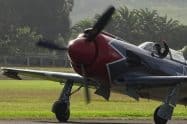




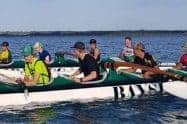


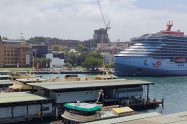



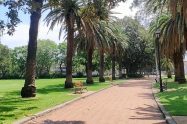


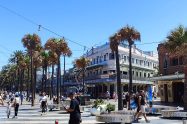
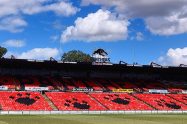













![JJ Harrison (https://www.jjharrison.com.au/) [<a href="https://creativecommons.org/licenses/by-sa/3.0">CC BY-SA 3.0</a>], <a href="https://commons.wikimedia.org/wiki/File:Wild_Oats_XI_about_to_finish_2011_Sydney_to_Hobart.jpg">via Wikimedia Commons</a> Sydney To Hobart Yacht Race](https://www.sydneypoint.com.au/wp-content/uploads/2019/12/Sydney-to-Hobart-Yacht-Race-9-187x124.jpg)
![JJ Harrison (https://www.jjharrison.com.au/) [<a href="https://creativecommons.org/licenses/by-sa/3.0">CC BY-SA 3.0</a>], <a href="https://commons.wikimedia.org/wiki/File:Investec_Loyal_about_to_win_2011_Sydney_to_Hobart.jpg">via Wikimedia Commons</a> Sydney To Hobart Yacht Race](https://www.sydneypoint.com.au/wp-content/uploads/2019/12/Sydney-to-Hobart-Yacht-Race-8-187x124.jpg)

![Albinfo [<a href="https://creativecommons.org/licenses/by-sa/3.0">CC BY-SA 3.0</a>], <a href="https://commons.wikimedia.org/wiki/File:2012_Sydney-Hobart_SouthHead_crowd.jpg">via Wikimedia Commons</a> Sydney To Hobart Yacht Race](https://www.sydneypoint.com.au/wp-content/uploads/2019/12/Sydney-to-Hobart-Yacht-Race-5-187x124.jpg)
![Albinfo [<a href="https://creativecommons.org/licenses/by-sa/3.0">CC BY-SA 3.0</a>], <a href="https://commons.wikimedia.org/wiki/File:2012_Sydney-Hobart_NorthHead_boats.jpg">via Wikimedia Commons</a> Sydney To Hobart Yacht Race](https://www.sydneypoint.com.au/wp-content/uploads/2019/12/Sydney-to-Hobart-Yacht-Race-7-187x124.jpg)
![Albinfo [<a href="https://creativecommons.org/licenses/by-sa/3.0">CC BY-SA 3.0</a>], <a href="https://commons.wikimedia.org/wiki/File:2012_Sydney-Hobart_NorthHead_first.jpg">via Wikimedia Commons</a> Sydney To Hobart Yacht Race](https://www.sydneypoint.com.au/wp-content/uploads/2019/12/Sydney-to-Hobart-Yacht-Race-6-187x124.jpg)
![Albinfo [<a href="https://creativecommons.org/licenses/by-sa/3.0">CC BY-SA 3.0</a>], <a href="https://commons.wikimedia.org/wiki/File:2012_Sydney-Hobart_Start.jpg">via Wikimedia Commons</a> Sydney To Hobart Yacht Race](https://www.sydneypoint.com.au/wp-content/uploads/2019/12/Sydney-to-Hobart-Yacht-Race-4-187x124.jpg)

![Mark McIntosh [<a href="http://creativecommons.org/licenses/by-sa/3.0/">CC BY-SA 3.0</a>], <a href="https://commons.wikimedia.org/wiki/File:Sydney_2_Hobart_yachts.JPG">via Wikimedia Commons</a> Sydney To Hobart Yacht Race](https://www.sydneypoint.com.au/wp-content/uploads/2019/12/Sydney-to-Hobart-Yacht-Race-3-187x124.jpg)





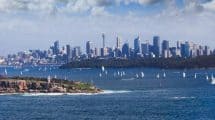
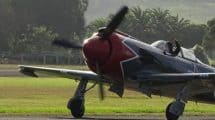

Do You Have a Question to Ask?